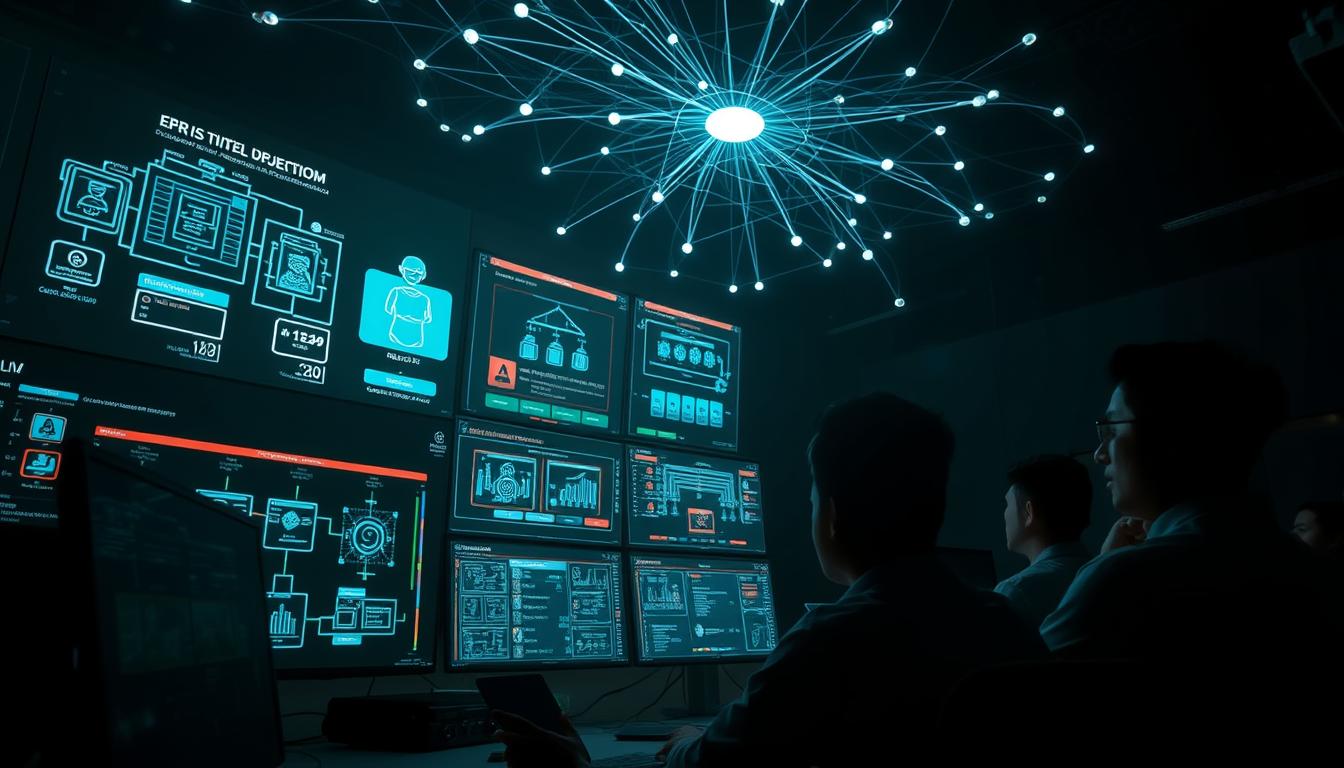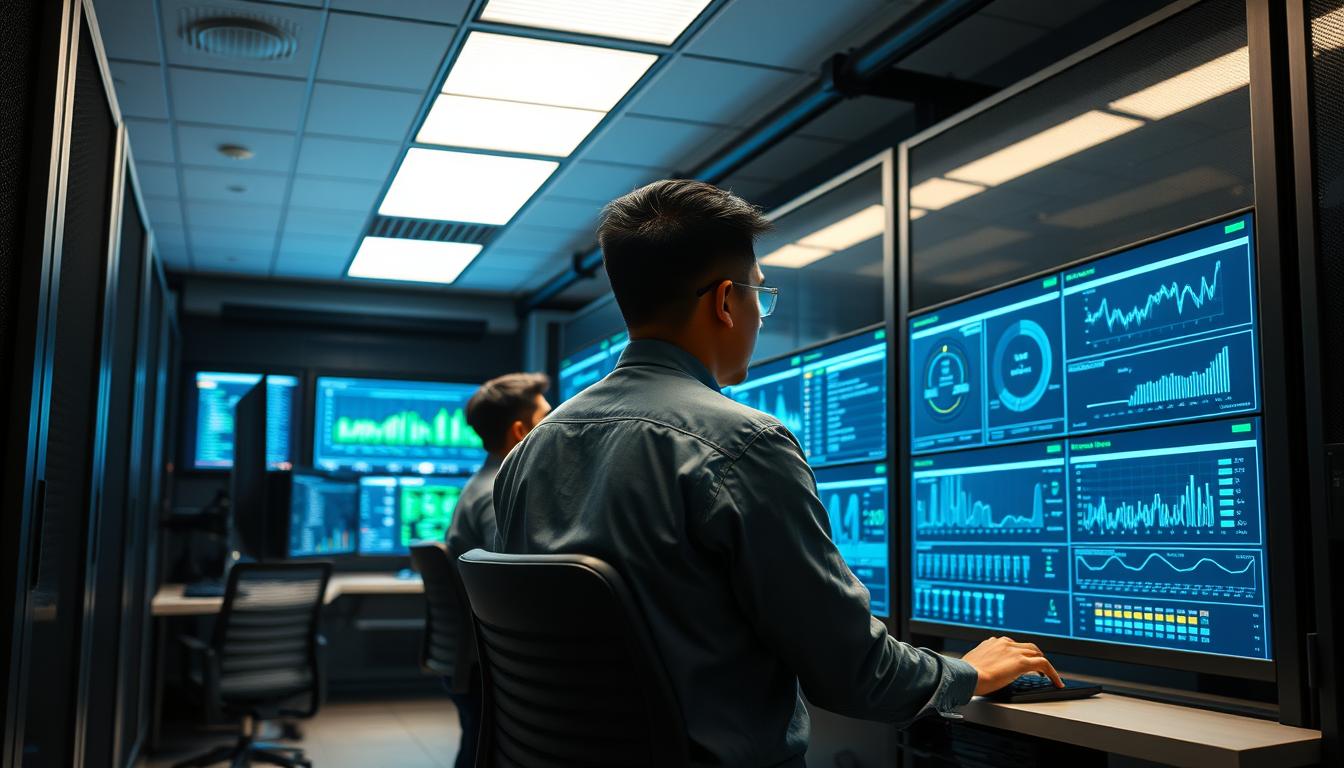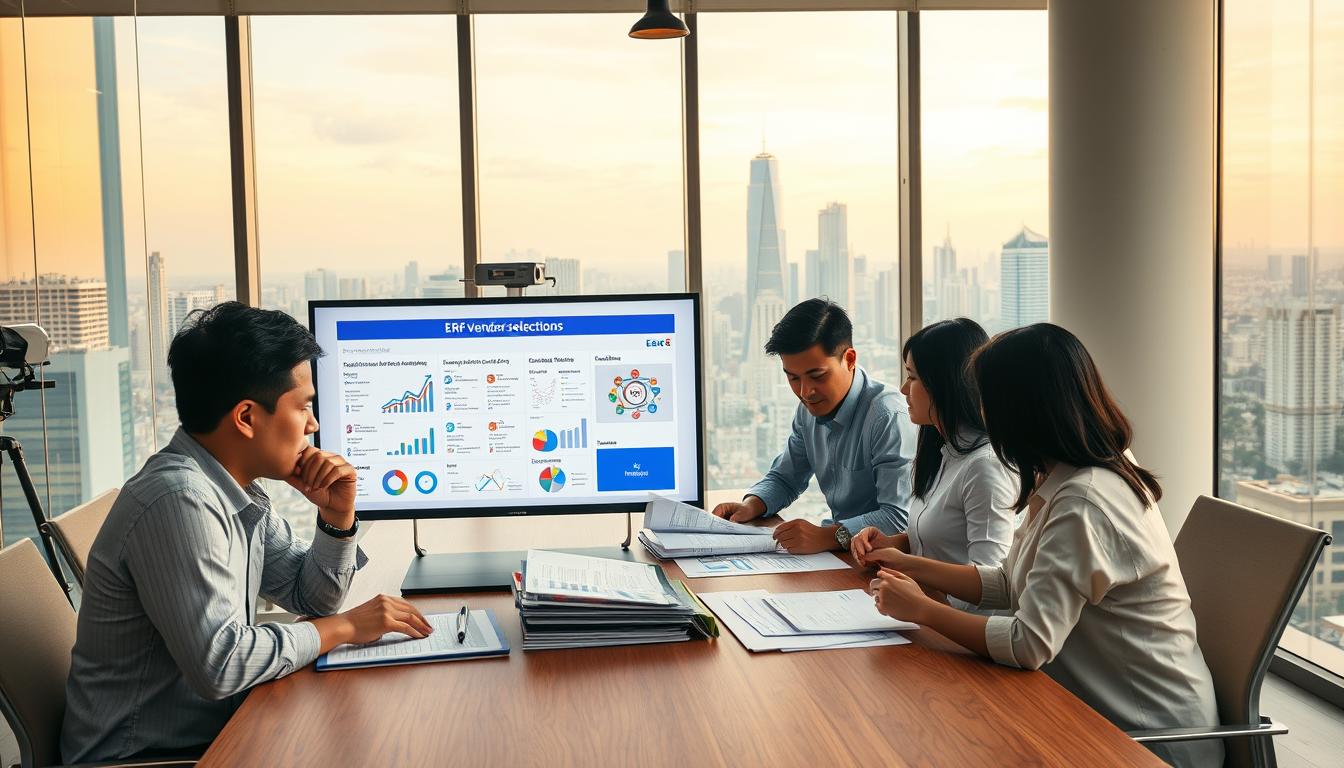In the Philippines, more businesses are using ERP systems to improve their operations. But, they must ask: Is their data and processes safe from cyber threats? An ERP system can change how businesses manage things like inventory and customer service. Yet, it also brings big security risks.
It’s vital to know the main security points before switching to an ERP system. This way, businesses can protect their sensitive info and keep running smoothly.
Key Takeaways
- ERP implementation requires a strong security strategy.
- Identifying potential vulnerabilities is crucial before deployment.
- Access controls, such as RBAC and MFA, are essential for protection.
- Continuous monitoring and auditing enhance long-term security.
- Choosing the right vendor significantly impacts overall security.
Understanding ERP Security
Keeping an organization’s data and systems safe is key in today’s digital world. ERP security means using strategies and measures to protect ERP systems from unauthorized access and threats. It covers data protection, risk management, and cybersecurity.
ERP systems are crucial for integrating important business functions. So, making sure they are secure is essential.
What is ERP Security?
ERP security protects business data in ERP platforms. It ensures the confidentiality, integrity, and availability of sensitive information. Good ERP security strategies include access controls, regular updates, and vulnerability assessments.
Businesses need to stay alert because security breaches can cause big problems. They can disrupt operations and harm finances.
Importance of ERP Security for SMEs
For small and medium-sized enterprises (SMEs), ERP security is very important. Many SMEs use these systems for daily operations, making them targets for cyberattacks. A data breach can hurt a small business a lot.
It can damage customer trust and the brand’s reputation. Strong ERP security measures protect important information. They also help SMEs meet regulatory requirements and stay competitive.
Common Risks Associated with ERP Systems
ERP systems are crucial for businesses but come with many risks. These risks can harm operations and protect sensitive information. It’s vital to understand these risks for good cybersecurity, focusing on ERP cyber threats.
Data Breaches and Cyber Threats
Data breaches are a big threat to ERP systems. They expose sensitive info and hurt trust. These breaches often come from system weaknesses, making it key to act early.
Cybercriminals look for these weaknesses to exploit. This can cause huge problems for companies. Strong cybersecurity can help prevent these issues and keep data safe.
Insider Threats and Misuse
Insider threats are a big worry in ERP systems. Employees with access might misuse it, on purpose or by accident. This can lead to unauthorized data access or changes to important info.
Having strict access controls and watching for misuse can help. This reduces the risk of insider threats and keeps data safe.
| Type of Threat | Description | Prevention Strategies |
|---|---|---|
| Data Breaches | Unauthorized access leading to sensitive information exposure. | Regular security updates, encryption, and strong password policies. |
| Cyber Threats | Malicious attacks aimed at exploiting ERP vulnerabilities. | Firewall implementation, intrusion detection systems, and employee training. |
| Insider Threats | Misuse of access privileges by employees. | Role-based access control and regular audits. |
Conducting a Thorough Risk Assessment
A detailed risk assessment is key to spotting both technical and non-technical weaknesses in ERP systems. It looks at system design, data movement, user access, and rule following. For businesses in the Philippines, this is crucial for keeping data safe and running smoothly.
Identifying Vulnerabilities in ERP Systems
Finding ERP weaknesses needs a careful plan. Risk checks can show security holes, like:
- Weak access controls letting in unauthorized users.
- Unencrypted data that can be caught in the middle.
- Outdated software missing security updates.
- Inadequate backup solutions making data hard to get back.
Spotting these issues lets companies focus on fixing them.
Evaluating Technical and Non-Technical Risks
Assessing risks fully means looking at both tech and non-tech areas. Tech risks include bugs or setup mistakes. Non-tech risks come from people not knowing security rules. Here’s how to organize your checks:
| Risk Type | Description | Impact Level |
|---|---|---|
| Technical Risks | Issues in software and hardware that affect how it works. | High |
| Non-Technical Risks | Staff not knowing about security rules. | Medium |
| Regulatory Risks | Not following local laws on data safety. | High |
Implementing Strong Access Controls
Keeping your ERP system safe is key. Role-Based Access Control (RBAC) is a top way to do this. It lets users see only what they need for their jobs. This makes it hard for unauthorized access and makes managing user rights easier.
Role-Based Access Control (RBAC)
RBAC helps set up clear roles in your company. Each role gets specific permissions based on department needs. For example, finance can see financial records, while marketing sees campaign data. This keeps sensitive info safe.
Importance of Multi-Factor Authentication (MFA)
Using Multi-Factor Authentication (MFA) is also crucial. It adds an extra security step, asking for more than one way to prove who you are. This makes it much harder for hackers to get in, keeping your data safe.
Data Protection and Backup Procedures
Data protection is key to keeping ERP systems safe. Using strong data encryption keeps sensitive info secure. This is crucial in today’s digital world to build trust and follow privacy laws.
Importance of Data Encryption
Data encryption is a core part of keeping data safe. It makes data unreadable to anyone who shouldn’t see it. This way, companies can protect their data from breaches. It’s not just about following rules; it’s about keeping customers’ trust.
Backup Frequency and Verification Practices
Having a good backup plan is essential for data safety. Regular backups help keep important data safe in case of emergencies. How often you back up depends on how often your data changes.
Testing these backups makes sure the data can be recovered. This makes your ERP system more secure and reduces the chance of losing data.
Monitoring and Auditing for Continuous Security
Keeping ERP systems safe requires constant watchfulness through system monitoring and regular audits. These steps help spot issues quickly and are key to protecting ERP systems. With the right monitoring tools, businesses can learn a lot and keep their data safe from threats.
System Activity Monitoring
System monitoring is the first defense for ERP systems. It tracks login attempts, access, and data changes. This lets businesses catch odd behavior early. It helps SMEs in the Philippines act fast to keep their operations safe. The main benefits of good system monitoring are:
- Real-time alerts for unauthorized access.
- Detailed logs for forensic investigations.
- Better tracking of user behaviors and patterns.
Regular Security Audits
Regular security audits check if security measures are working well. Audits look at what’s strong and weak in the system. They give a full view of risks. Regular audits also check if a company follows industry rules and strengthen ERP protection. Things to look at during an audit include:
| Audit Area | Description |
|---|---|
| Access Control | Check of user permissions and access levels. |
| Data Protection | Look at encryption and backup plans. |
| Incident Response | Check of incident response plans and how well they work. |
Post-Implementation Support
After setting up an ERP system, it’s crucial to keep it running smoothly. Post-implementation support helps keep the system safe and efficient. It involves regular updates and checks to stay ahead of threats.
Ensuring Ongoing Security Measures
To keep your ERP system safe, you need to:
- Regular software updates to fix weaknesses.
- Keep checking for security risks.
- Update security rules as threats change.
- Have plans ready for security problems.
A team in the Philippines can help with these tasks. They make sure your ERP system is always up-to-date and secure.
Training Employees on ERP Security Practices
Teaching employees about ERP security is key. They need to know how to use the system safely. Important training topics include:
- Why strong passwords are important.
- How to spot phishing and other online dangers.
- Creating a security-focused work culture.
Training your team well makes them more aware of security. This helps protect your ERP system better.
Choosing the Right ERP Vendor
Choosing the right ERP vendor is key in today’s data world. Companies need to pick vendors based on their security and compliance. It’s important to check if the vendor meets your business’s security needs.
Vendor Security Standards and Compliance
When looking at vendors, check their security standards. You need to see if they follow the rules of data privacy and international standards. A vendor that follows these standards means your data is safe.
Evaluating Vendor Experience in ERP Security
Experience in ERP security is crucial. Look for vendors with a good track record. They should have references and success stories. This helps you choose the right vendor for your security needs.
Integrating Third-Party Solutions Safely
Adding third-party solutions can boost what ERP systems can do. But, making sure they work well and are safe is key. First, check the security of any new apps before adding them to your system.
Assuring Compatibility and Security
Checking if third-party apps fit with your ERP is important. It makes sure everything works smoothly together. Also, security checks are vital to keep your data safe and your system running well.
This careful planning helps avoid problems like data theft and system crashes.
Vendor Collaboration and Trust
It’s crucial to trust the companies you work with for ERP integration. Talking and working together can make your system safer. Make sure these vendors meet high security standards.
This way, you can be sure your system is secure and reliable.
| Factor | Importance for ERP Integration |
|---|---|
| Compatibility | Ensures seamless functionality and user experience |
| Security Assessment | Prevents vulnerabilities and data breaches |
| Vendor Trust | Enhances collaboration and security measures |
| Regular Reviews | Maintains ongoing compatibility and security posture |
Conclusion
ERP security is key for Philippine SMEs to succeed. It helps them use advanced technology better. They need strong security from the start to the end.
Strong access controls and data encryption are important. Choosing the right vendors also helps a lot. This keeps data safe and lets businesses grow.
Creating a security-focused culture is essential. For more tips on keeping data safe, check out this resource on cyber security. It offers strategies and best practices for ERP security.
FAQ
What is ERP Security?
ERP security is about protecting ERP systems from unauthorized access. It ensures the data remains safe and available. This is key for keeping business data secure.
Why is ERP Security important for SMEs?
For SMEs, ERP security is vital. It helps avoid disruptions and financial losses. Since ERP systems handle core business functions, a single weakness can put the whole business at risk.
What are the common risks associated with ERP systems?
ERP systems face risks like data breaches and cyber threats. Insider threats and misuse are also concerns. These can harm sensitive data and cause operational issues.
How can I identify vulnerabilities in ERP systems?
To find vulnerabilities, do a detailed risk assessment. Look at system architecture, data flows, user permissions, and regulatory compliance.
What is Role-Based Access Control (RBAC)?
RBAC limits system access based on user roles. It ensures users only see what they need. This reduces the risk of unauthorized data access.
Why is Data Encryption important?
Data encryption keeps sensitive info safe by making it unreadable. It’s crucial for following data privacy laws and keeping customer trust.
What does system activity monitoring involve?
System activity monitoring tracks login attempts and data changes. It helps spot security threats early and respond quickly.
What ongoing support is necessary after implementing an ERP system?
After implementing an ERP system, ongoing support is key. This includes regular updates, risk assessments, and security policy reinforcement to stay ahead of threats.
How do I choose the right ERP vendor?
When choosing an ERP vendor, check their security history. Make sure they meet industry standards and data security regulations.
What should I consider when integrating third-party solutions?
When adding third-party apps, check their compatibility and security. This ensures they don’t weaken your ERP system’s defenses.



